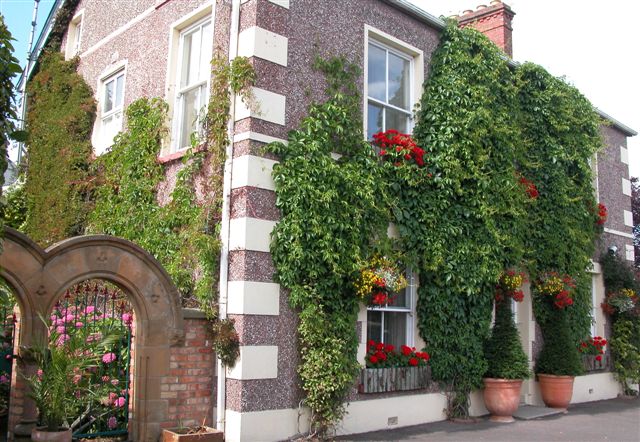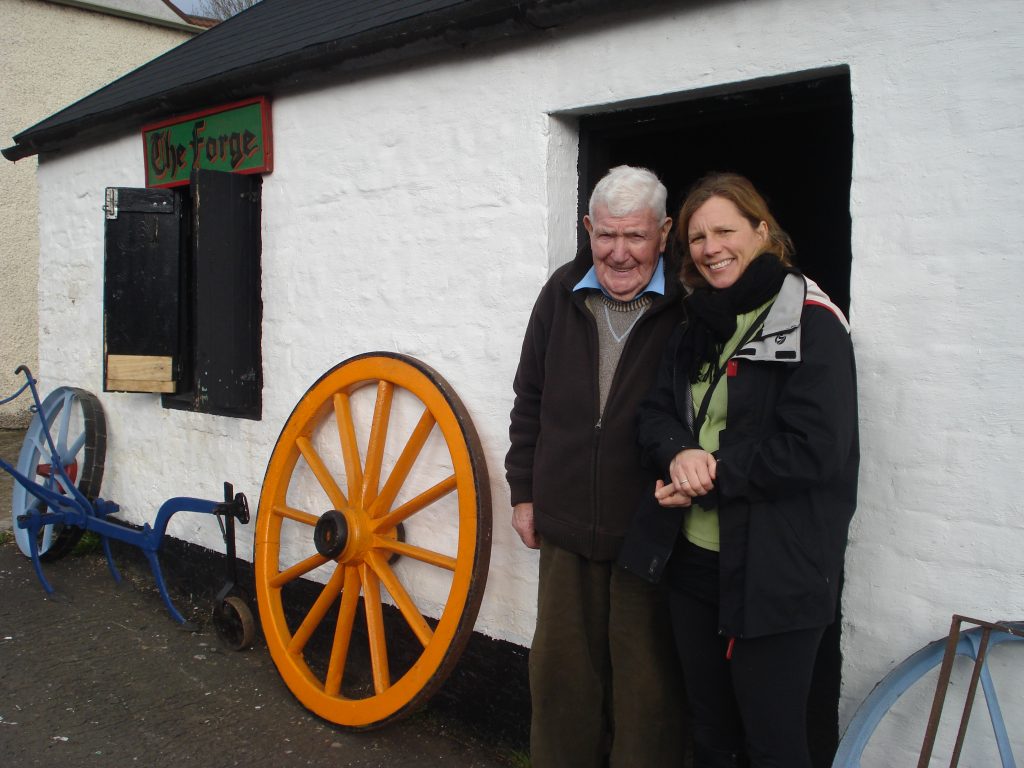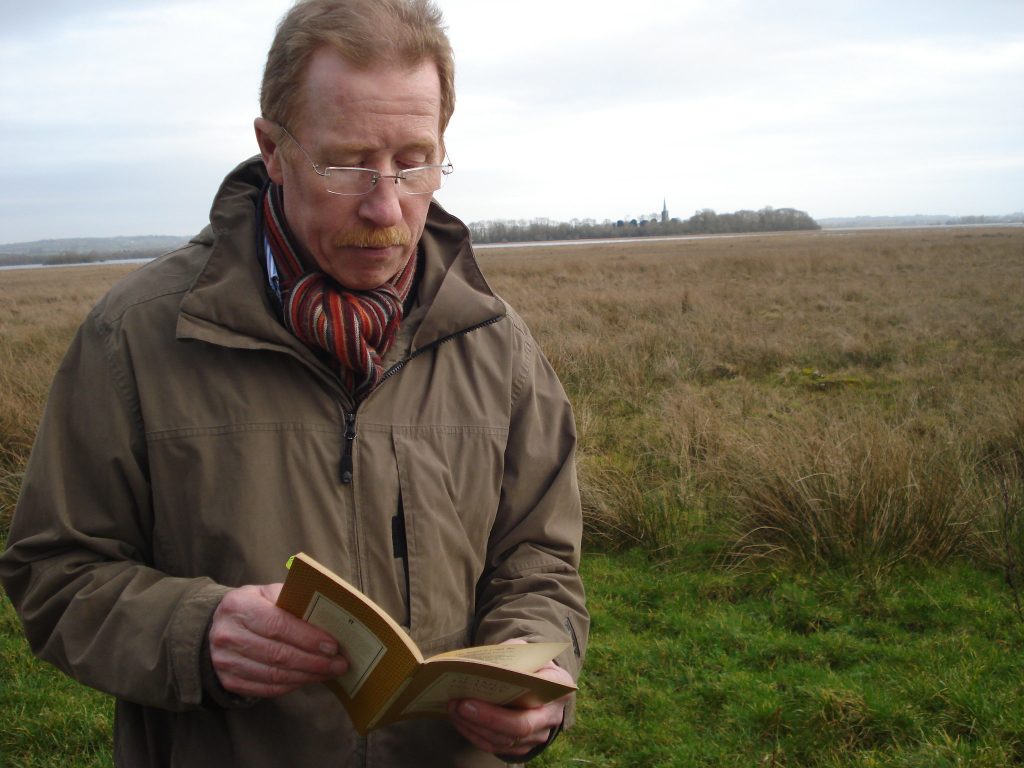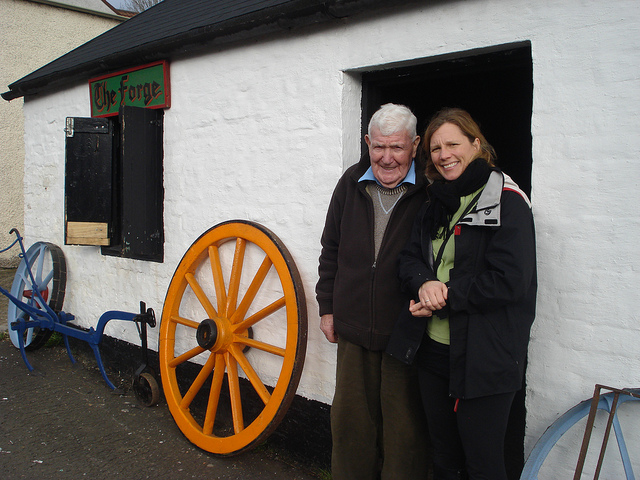It’s not often many tourists find themselves travelling through Magherafelt in Northern Ireland, but I was researching Seamus Heaney’s homelands for another article recently, when I found myself staying for a night at Laurel Villa Guest House, an elegant, Victorian house in the heart of this south Derry market town. My stay evolved as one of Heaney’s poems might, starting with a modest, friendly welcome, an unveiling of rich, quality content, some laughs, some tears, beautiful images and then, ultimately, a feeling of sheer satisfaction and pleasure. All in 24 hours in Magherafelt.
Fine tourism businesses which hold our cultural heritage in high esteem are few and far between, especially ones which pull it off with such commitment to the literary art form as do its owners, Geraldine and Eugene Kielt. I arrived mid-morning and, after a welcome of home-made scones and coffee, Eugene and I headed off for a guided tour of Heaney country.

One of the best guides in Northern Ireland
It was hard to get me out the door, however, as I explored this houseful of cultural gems, such as 10 signed, limited edition linen scrolls with a Heaney poem on each, a glass cabinet with first edition literary pamphlets, portraits of poets and writers, and books everywhere. It does not feel in any way like a shrine, however, more like an intimate literary museum, where you can sit with a cup of tea or glass of wine and chat in unhushed tones about Ireland’s greats.
Which is why it is hard to get out the door, but out you must go, as Eugene is a Blue Badge guide specialising in Heaney’s country, and he took me on one of the best guided tours I have ever done, full of such unexpected joys it would ruin it to share them all. First stop was an old forge at Hill Head. Not just any forge, of course, but The Forge from Heaney’s famous poem. There, waiting to greet us was Barney Devlin, the now octogenarian son of the blacksmith brought so brilliantly to life by Heaney.

Seamus Heaney’s poetry in motion
Unlike the fearsome blacksmith behind the “door into the dark”, his son is a jovial, witty character, who had me striking his anvil, regaled me with stories of the Forge Players who rehearsed here, and voiced his passion for educating young people through the spoken word. Just before we left, Devlin casually picked up a book of Heaney’s poems and read The Forge aloud in an unassuming, gentle way, as if it would have been rude not to. Hearing Heaney’s words aloud, as Devlin held my hand with a strong grip and slipped some old horse shoe nails into it for luck, was a moment never to be forgotten.
My tour continued along the same emotional vein, with stops outside Mossbawn farm, where Heaney was born, then on to the wet grasslands of Lough Beg, where we walked through sun strewn woodland to the lough shore. This is now an important bird reserve, managed by the Royal Society for the Protection of Birds. As the Whooper swans whooped and the sun started to set, no background could be any more sympathetic as Eugene began his reading of Heaney’s The Strand at Lough Beg. And so to Anahorish, Toomebridge and finally Bellaghy, where Heaney lived as a teenager and where you can see a stunning life-size bronze sculpture by David Annand called The Turfman , inspired by the Nobel Laureate’s poem, Digging.

There are four en suite bedrooms at Laurel Villa: the Kavanagh Room, the McNiece Room, the Longley Room and the Heaney Room. Beautifully decorated, warm and comfy, with art and poetry in every one, you can take your pick of which might best feed your soul. With hospitality such as this, and knowledge and passion to back it up, I am not surprised that Heaney gave a poetry reading here not so long ago. He always has a great instinct for the real thing when he sees it.
This article was first published in The Irish Times April 2011. A few years later, I was delighted to go back to Laurel Villa, Magherafelt, this time to write about the opening of Seamus Heaney Homeplace, an arts centre dedicated to the great man himself. Read more about my visit to Homeplace, including an interview with Catherine Heaney.

